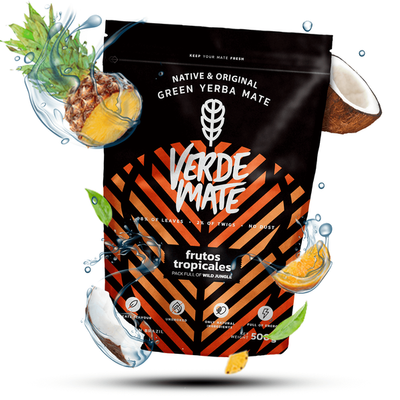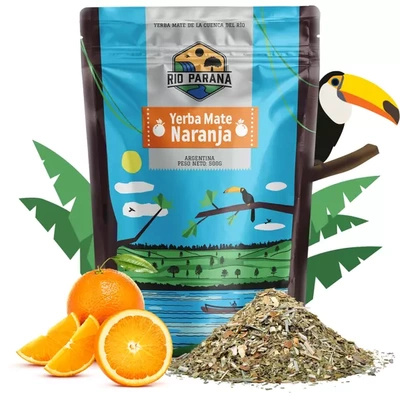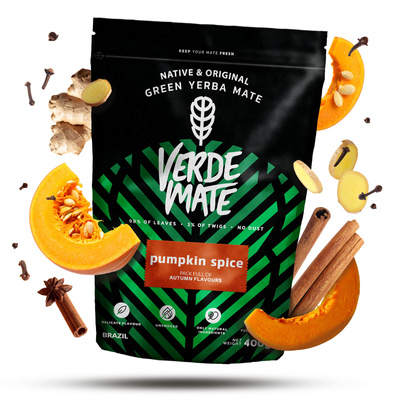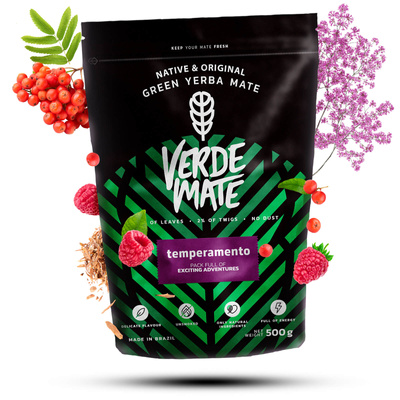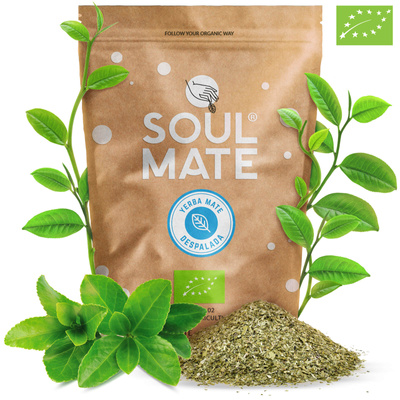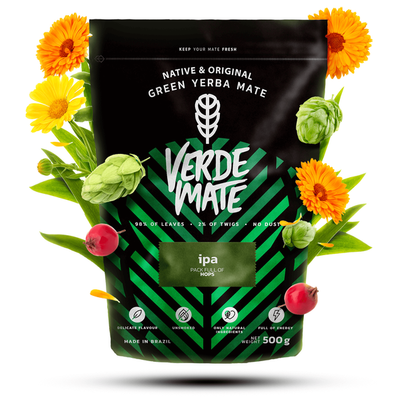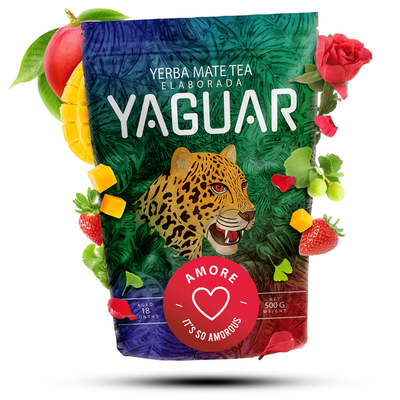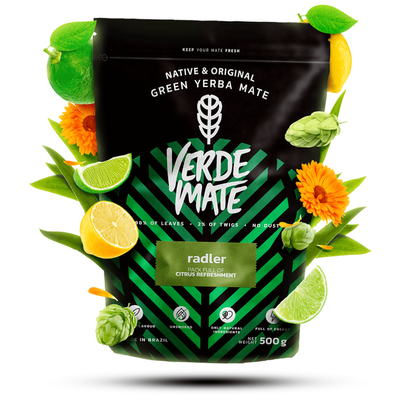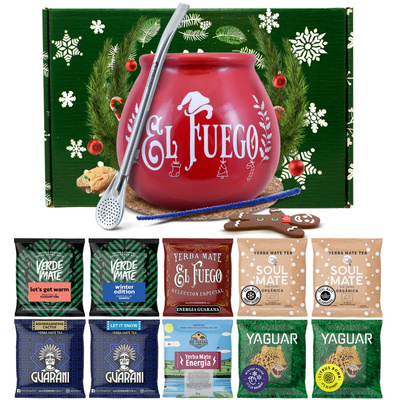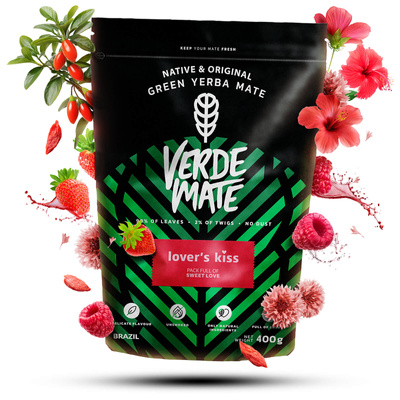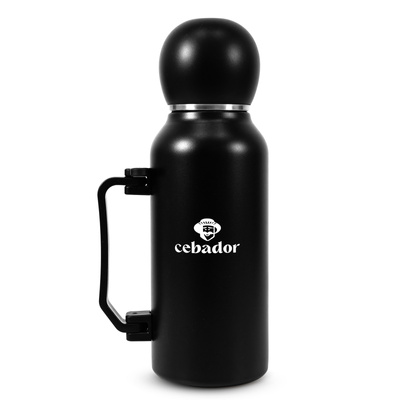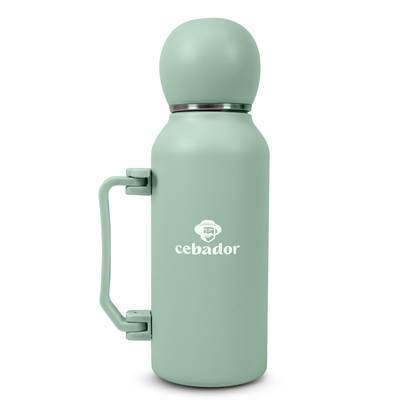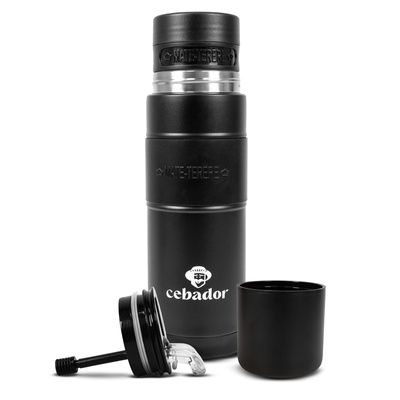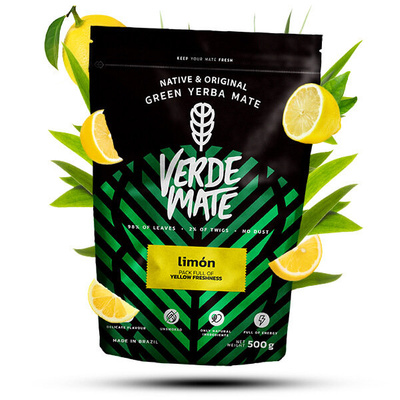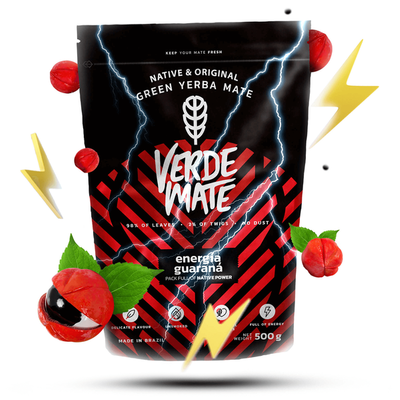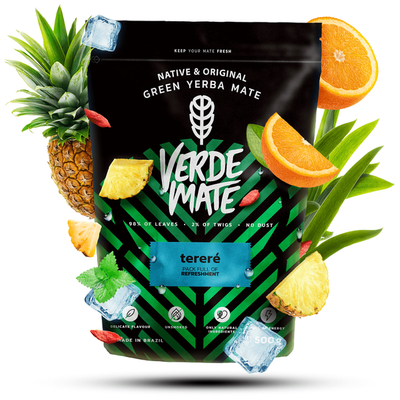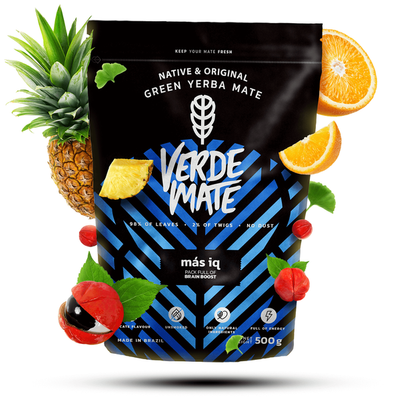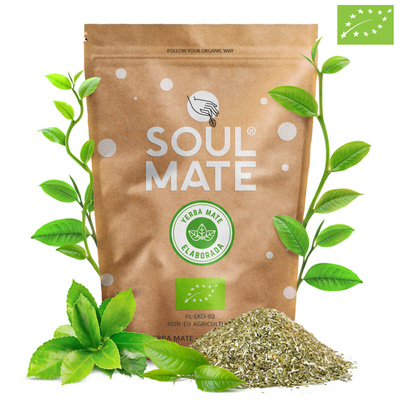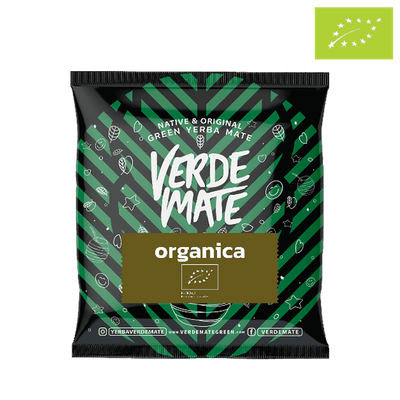Yerba mate - discover everything you need to brew and drink the brew
( number of products: 1393 )Yerba mate is a drink with a rich history and unique properties that is gaining popularity around the world. In this comprehensive guide, we will take a closer look at the topic of yerba mate, from its origins, through the different types and the way it is brewed, to its health and taste properties. We invite you to read on!
What is yerba mate?
Yerba mate is a drink prepared from the leaves of the Paraguayan holly, a plant native to South America. It is a traditional drink in countries such as Argentina, Paraguay, Uruguay and the southern part of Brazil. Yerba mate contains many nutrients such as vitamins, minerals, antioxidants and xanthines and saponins, which have beneficial effects on the body.
Origins and all about yerba mate
Theorigin of yerba mate dates back to pre-colonial times, when indigenous South Americans consumed the beverage for ritual, medicinal and social reasons. The yerba mate production process involves harvesting holly leaves, drying, grinding and seasoning. Depending on the country of origin and the production method, yerba mate can vary in flavour, aroma and properties.
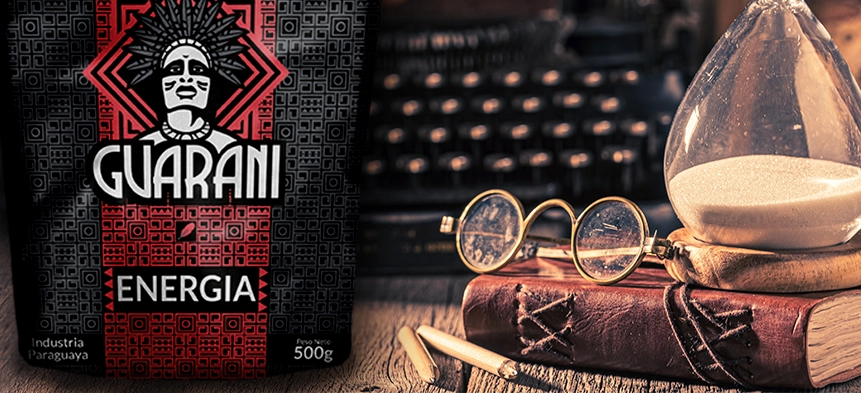
Yerba mate - some history
Yerba mate grows in the tropical borderlands of Brazil, Argentina and Paraguay. It also grows wild in Uruguay, although there, for economic reasons, dried yerba mate is not produced, but is imported from Brazil. The discoverers of the plant's properties were the Guarani Indians who inhabited the area. Hundreds of years ago, they noticed that after consuming the raw leaves of a hitherto unknown plant, they had more energy, their concentration increased, their senses sharpened and, in addition, they did not feel hungry. They used the leaves to prepare an energising and nutrient-rich infusion. The consumption of yerba mate was a ritual and the plant was given extraordinary care. It became an important part of their daily life and rich culture.
Types of yerba mate: yerba mate elaborada, yerba mate despalada, yerba mate sin palo, yerba mate con palo
There are different types of yerba mate, which differ in their leaf content, twigs and degree of grinding. Yerba mate elaborada is the most classic version, containing both leaves and twigs. Yerba mate sin palo (despalada, without twigs) is characterised by a higher leaf content and fewer twigs, resulting in a more intense flavour and more nutrients. In contrast, yerba mate con palo (with twigs) contains more twigs, which gives the drink a milder flavour and less stimulants. Choosing the right type of yerba mate depends on individual taste preferences and the expected properties of the drink.
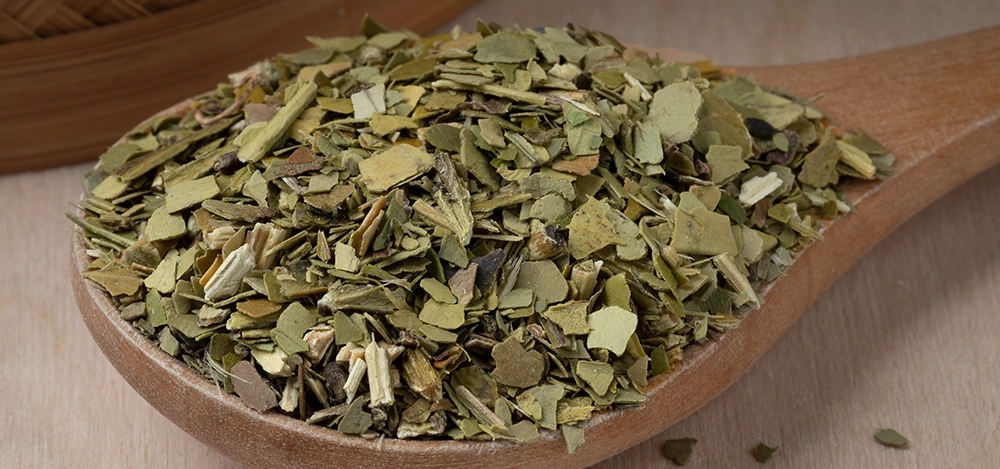
How to brew yerba mate?
Brewing yerba mate is a process that requires following certain rules and having the right accessories. In this paragraph, we will discuss how to brew yerba mate, how to prepare the drink and which accessories are necessary for its preparation.
Preparing good yerba mate: brewing instructions
To prepare yerba mate, follow these steps:
- Fill a vessel (e.g. calabash or palo santo) with dried yerba mate - about 20 - 30 g.
- Tilt the vessel and shake gently so that the finer dried particles move to the bottom and the larger particles stay on top.
- Insert the bombilla (a metal straw with a filter) into the vessel, pressing it against the wall.
- Pour a little cold water into the vessel to moisten the drought and allow it to "unfold".
- After a few minutes, pour hot but not boiling water (about 80°C) into the vessel, filling it to 3/4 of its volume.
- Wait a while for the drink to cool to the right temperature and then drink through the bombilla.
It is important that the instructions for brewing yerba mate are followed, as this affects the taste and properties of the drink.
How to prepare yerba mate hot and cold
Yerba mate can be prepared in two ways: hot (traditional) and cold (tereré). Hot yerba mate is prepared with hot water, which allows more nutrients and stimulants to be extracted. Cold yerba mate (tereré), on the other hand, is prepared from cold water or fruit juice, with the addition of fresh herbs and fruits, which gives the drink a refreshing taste and makes it ideal for hot days. The choice of preparation method depends on individual preferences and weather conditions.
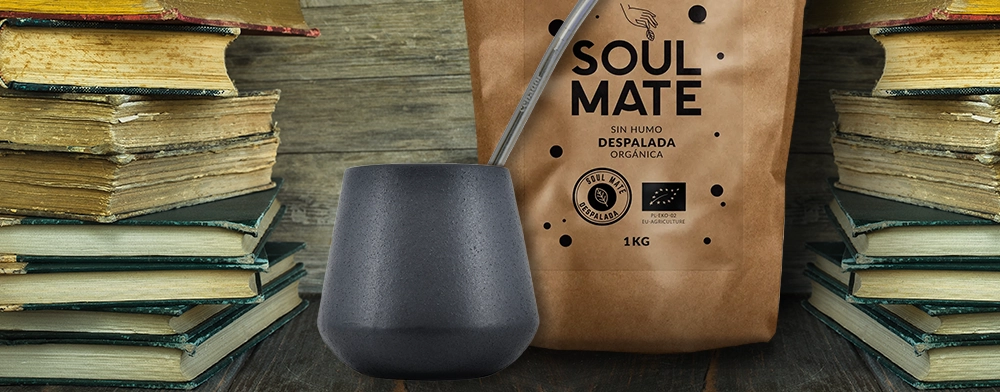
The accessories for yerba mate: bombilla, mattress, thermos
In order to prepare yerba mate, it is necessary to have the right yerba mate accessories, such as:
- Bombilla - a metal straw with a filter, used to drink the drink. The filter prevents small particles of the dry drink from entering the mouth.
- Matero - a vessel for brewing yerba mate, made of wood, calabash, ceramic or metal. Traditional vessels are made of calabash and decorated with leather or metal.
- Thermos - a hot water container that allows you to keep the water at the right temperature while brewing yerba mate.
Having these accessories makes it easier to brew yerba mate and makes the drink taste better and have the right properties.

Properties and effects of yerba mate
The properties and effects of yerba mate are widely appreciated by lovers of the drink. Yerba mate's effects on health and well-being have made it increasingly popular around the world.
Benefits of drinking yerba mate: effects on the mind and exercise
There are many benefits of drinking yerba mate, both for the mind and for the body. The effects of yerba mate on the mind manifest themselves as improved concentration, increased alertness and stimulation. Thanks to its caffeine content, the drink also acts as a mild stimulant that can replace coffee. Yerba mate and physical exercise is also an excellent combination, as the drink increases the body's performance, accelerates muscle recovery and aids fat burning.
Health properties of yerba mate: caffeine, antioxidants and more
The health properties of yerba mate are due to its wealth of nutrients such as vitamins, minerals and polyphenols. The properties of caffeine in yerba mate include stimulating the nervous system, increasing concentration and alertness and improving mood. In addition, yerba mate is rich in antioxidants, which neutralise free radicals and support the immune system. As a result, this drink can help reduce the risk of many diseases such as heart disease, diabetes and cancer.
Is yerba mate for everyone? Yerba mate in pregnancy and for beginners
Although yerba mate has many health benefits, is yerba mate for everyone? It is important to remember that the drink contains caffeine, which can cause undesirable side effects in people who are sensitive to its effects. Therefore, people with high blood pressure, heart disease or sleep disorders should be careful when consuming yerba mate. Yerba mate during pregnancy is also not recommended, as the caffeine can affect the development of the foetus. Advice for those starting out, yerba mate to begin with - it is advisable to start with smaller amounts of the drink and observe your body's reaction. As the body gets used to it, you can gradually increase the amount of the drink consumed.
Taste and health benefits of yerba mate
The taste and healthiness of yerba mate are two aspects that are attracting more and more people to this remarkable drink. Depending on the variety, the taste of yerba mate can vary and its health benefits are widely appreciated.
Taste of the finest yerba mate: Brazilian green, Paraguayan, Argentinean
The taste of the finest yerba mate depends on the country of origin and the way the leaves are dried. Brazilian green yerba mate is characterised by a delicate, herbal flavour with a hint of sweetness. Paraguayan yerba, on the other hand, is more intense in flavour, with a pronounced bitterness and smoky aroma. Argentine yerba, on the other hand, has a milder taste, with a mild bitterness and herbal aroma. Choosing the right variety depends on individual taste preferences.
Flavoured yerba mate: variety of flavours
Fruity yerba mate is an excellent option for those who want to discover the taste of yerba mate in a slightly different version. Different flavours are available, such as citrus, mint, strawberry or tropical fruit. Flavoured yerba mate combines the classic taste of yerba with additional flavour notes, making them even more appealing to first-time yerba mate lovers.
Negative properties of yerba mate: is yerba addictive?
Although yerba mate has many health benefits, it is also worth noting the negative properties of yerba mate. One of the potential risks is the issue of addiction. Yerba is addictive mainly due to its caffeine content, which can lead to mental and physical dependence. It is therefore advisable to consume yerba mate in moderation, especially if you are sensitive to caffeine. It is also worth bearing in mind that excessive consumption of yerba mate can lead to undesirable side effects such as insomnia, headaches or increased blood pressure.
Where to buy yerba mate?
If you are wondering where to buy yerba mate, it is worth paying attention to several selection criteria, such as the quality of the product, the availability of different varieties or the price. Recommended places include both online and stationary shops. In both cases, it is worth paying attention to other customers' opinions and the shop's offer.
Online yerba mate shop - what is worth choosing?
When it comes to online yerba mate shops, it is worth looking out for those that specialise in this field, a passionate yerba mate shop. These types of shops usually offer a wide range of products, for example, a specialist yerba mate and accessories shop allows you to buy everything you need to brew yerba mate. A great example of a yerba mate - online shop is MateMundo. The advantages of online shopping include convenience, availability of different brands and varieties and often lower prices than in stationary shops.
Stationary yerba mate shop: where to look in Poland?
If you prefer to shop in a stationary yerba mate shop, it is worth looking for ones that offer a wide selection of products. You will find specialised yerba mate shops in larger cities such as Warsaw, Krakow or Wroclaw. Yerba mate is becoming increasingly popular in Poland, so more and more shops are offering this product. It is also worth checking out the offer of health food shops or delicatessens, which often have yerba mate in their assortment.
A yerba mate starter kit: what should it contain?
If you are just starting out with yerba mate, it is worth investing in a yerba mate starter kit. Such a kit should contain everything you need to prepare the drink, namely:
- yerba mate (preferably several different varieties so that you can try out different flavours)
- matero (a yerba mate vessel, e.g. made of calabash, ceramic or wood)
- bombilla (a metal straw with a filter for drinking yerba mate)
- thermos or kettle to heat water
The yerba mate starter kit can be purchased both online and in stationary shops. It is worth paying attention to the quality of the products and the price of the kit in order to make a satisfactory purchase.
Summary
In this text, we have provided a comprehensive guide about yerba mate, discussing its origins, composition, types, brewing method, properties, taste and where to buy it. Yerba mate is a drink with a rich history and many health benefits, which is also gaining popularity in Poland.
The preparation of yerba mate requires the right accessories, such as a mattress, bombilla or thermos, as well as knowledge of hot and cold brewing techniques. It is worth experimenting with different varieties of yerba mate, such as elaborada and despalada, sin palo or con palo, and trying flavoured versions to find your favourite taste.
Yerba mate has a number of health properties, such as stimulating the mind, supporting exercise, antioxidant effects and effects on the immune system. However, it is worth remembering that it is not a drink for everyone, especially for pregnant women or beginners who may experience negative effects from consuming yerba mate.
If you want to try yerba mate, it is a good idea to start by buying a starter kit, which contains everything you need to prepare the drink. Yerba mate can be purchased both online and in stationary shops, and its popularity means that more and more places are offering the product.

Guarani Drink – Cold Brew Yerba Mate Infusion – Sabor Citrus 330ml
